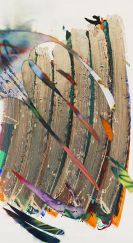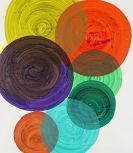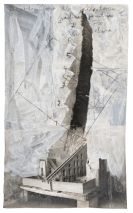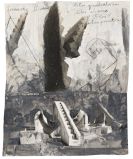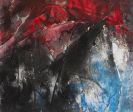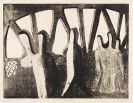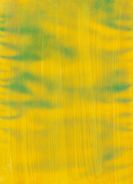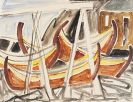
Julius Heinrich Bissier
Freiburg/Brsg.
1893 -
Ascona
1965
After short studies at the "Kunsthistorisches Institut" of the university of Freiburg and the Karlsruhe art academy between 1913 and 1914, Julius Heinrich Bissier was drafted to serve in the military. After his return to Freiburg in 1918, Bissier continued his painting training autodidactically. His close friendship with the sinologist Ernst Grosse, who introduced Julius Heinrich Bissier to Far Eastern art, had a formative influence on the artist's development. In 1920 his first solo exhibition took place at the "Kunstverein Freiburg". Stylistically, the following decade he was under the influence of "Neue Sachlichkeit" ("New Objectivity") and Surrealism. Towards the end of the 1920s Willi Baumeister, who became friends with Bissier in 1929, was behind a gradual transition to non-representational painting.
In 1929 Julius Heinrich Bissier was employed as a drawing instructor at the university of Freiburg. In 1930 he produced his first non-representational ink drawings. Almost the entire early works of Bissier were destroyed in a fire at the university of Freiburg in 1934. Nazi pressure forced the artist to resign from his teaching position.
Subsequently he moved to Hagnau at Lake Constance, where he produced drafts for carpets and weavings for the his wife Lisbeth's developing weaving business. The artist also developed an interest in ceramics, when he met the potter Richard Bampi in 1942.
From 1947, after long struggles, Julius Heinrich Bissier managed to reintegrate color in his artwork. He produced colored monotypes and from 1948 also woodcuts. A short period focusing on geometric pictures on canvas followed in 1953. Around the mid 1950s the artist discovered watercolor techniques. At the same time Bissier produced his "miniatures" in egg-oil-tempera. In 1958, the first large retrospective at the Hanover "Kestner-Gesellschaft", which was later shown in several German cities, helped Bissier to international success. In the same year and again in 1960 Julius Heinrich Bissier participated in the Venice Biennale and in 1959 and 1964 he took part in the Kassel "documenta". From the early 1960s international exhibitions and numerous honors and awards, including the German "Bundesverdienstkreuz" in 1964 followed.
Would you like to sell a work by Julius Heinrich Bissier?
Infos for seller
